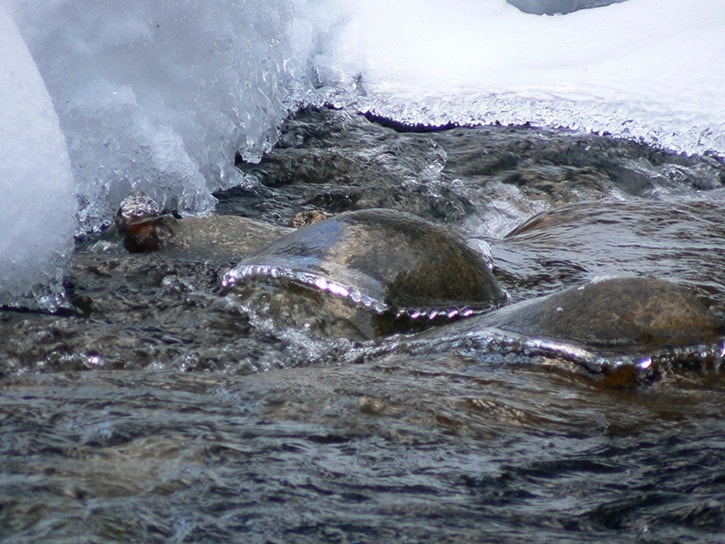A common thought of some folk who have been to someplace, when suggested they go there again, is “Been there, done that.” That doesn’t hold much water when it comes to Kootenay Lake. No day is the same on Kootenay Lake. I find the scene is always different.
Many aspects of our environment are like that. It is never a case of been there, done that. Creeks change, perhaps not so dramatically and obviously as the face of Kootenay Lake. They vary from day to day and week to week. When temperatures drop below freezing, rainfall diminishes, spring runoff quits and when the snowmelt stops, creek beds carry less water or even dry up. It’s harder to get the canoe upstream or downstream over the shallow rapids.
Spring creeks are very vocal. But in winter, deep snow enshrouds the creeks, hushing their continuous babbling, splashing and quiet roar. When snowshoeing up a creek you hardly know there is a creek nearby until almost on top of it. Sometimes, creeks are completely bridged over and they are not heard at all. Other times, if too close to the edge, the soft snow will give way, sending you down into the snowy channel to wet or icy rocks surrounded by frigid water.
In late fall, when it’s cold enough, glaciers quit melting, cutting off the supply to glacial streams, and Kootenay River loses that greenish hue. All of this affects the creek community. Those who do not connect or have not connected with a creek don’t even think about that. While we “sleep”, the creeks, like the ocean, continue on, ebbing and flowing. When temperatures drop, open areas of the creeks cover over with ice.
It is at some of these open patches that one may see another face of an icy creek. If the creek has frozen over when the water level was high, there is often a space under the ice when the water level drops. The underside of the ice often has a much different character than the surface we commonly view. In contrast, the underside of the ice may be full of all shapes and depths of pockets separated by glassy ridges of ice curving this way and that depending on the direction and speed of the water at that particular location. Some of you are acquainted with watercolours, but these are water “carvings”. In some places, you can not only stick your head under the ice but walk or crawl under the ice in a dry winter creek bed and view this phenomenal artwork. Remember, all of this is suspended from a “ceiling” of translucent to transparent ice.
Also hanging from the this ceiling, especially around the edges of openings in the ice, are all sorts of glassy looking “stalactites” (from the ceiling they hang on “tite”) and, sometimes, a few “stalagmites”. Wherever the water sprays or mists on sticks, overhanging branches, creek banks and on rocks, there is almost every type of formation. When air temperatures fall below freezing, crystal balls, bells and pendants of all sizes and types take shape. Each of the hanging ice creations starts by a drop of water that froze to some streamside object. On a horizontal branch I have seen a dozen ice pendants. Each had its beginning as a drop of water. Now, we must note the life in one of our local higher mountain creeks. (My journal notes are for the first Tuesday in April.)
Now, you are not going to believe this, but in the upper reaches of the north fork of Summit Creek is one of the rarest creatures in the world. In fact, it is so rare you have probably never heard of it, let alone seen it. And, I must admit, it is so rare I haven’t seen one either. However, I have heard a rumour that it might also be found in the icy waters of creek in a remote part of Siberia. I couldn’t prove that because I have never been there. I only heard.
Now, I am sometimes reluctant to tell just anybody the name of or the location of some rare plant or seldom seen animal or bird. However, since you can be trusted, I will divulge the name of this rare creature. It is an ice turtle (Crategous spinulosa). Can you believe it?
Ed McMackin is a biologist by profession but a naturalist and hiker by nature. He can be reached at 250-866-5747.
